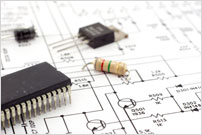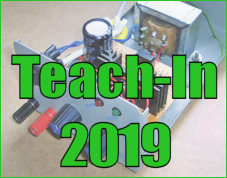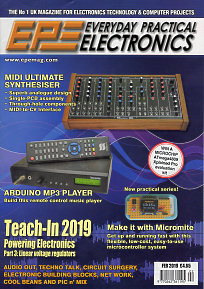February 2019 Issue
A summary of this month's contents.
MIDI Ultimate Synthesiser
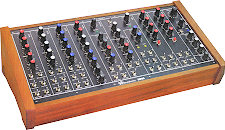
This fully-featured analogue synthesiser has a performance comparable with many commercial instruments, but can be constructed by anyone who can identify components and solder them neatly and methodically. Access to a range of test equipment (digital multimeter, oscilloscope, frequency meter, variable PSU) is also desirable but not entirely essential.
The MIDI Ultimate is a large project with 700 components but, with care, success is readily achievable. All parts, both individual ones and in kit form, will be available from Soundtronics, a UK-based company specialising in DIY synth building and who can also supply the front panels and hardwood case.
In Part One this month, the synthesiser’s range of modules are explored and a parts list is given. Construction of the MIDI Ultimate starts next month.If you want to have a go at building a satisfying analogue synthesiser, this series is for you, so don't miss it!
Arduino MP3 Player
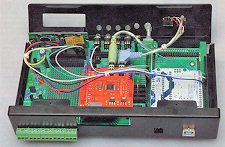
This project is built from an Arduino MP3 shield, housed in an Altronics Mega Box (see last month) to make a neat and tidy MP3 player. As an added bonus an IR remote control can be used.
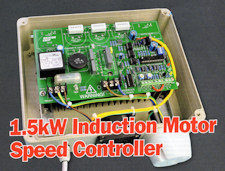
Last month we described the features of this very sophisticated speed controller designed for small induction motors and explained its operation in detail. In Part 2 the parts list, fully-illustrated construction and testing details are provided along with some guidelines for proper use.
This is an improved and updated version of the original Silicon Chip design and includes PCB improvements, up-rated parts and revised software.
![]() WARNING! This project is suitable for very advanced and experienced constructors only. This circuit operates at dangerous voltages throughout. Most parts operate at mains potential or higher. Do not attempt to build it unless you know exactly what you are doing and are very experienced with working with high-voltage circuitry.
WARNING! This project is suitable for very advanced and experienced constructors only. This circuit operates at dangerous voltages throughout. Most parts operate at mains potential or higher. Do not attempt to build it unless you know exactly what you are doing and are very experienced with working with high-voltage circuitry.
![]() Australian supplier Altronics have a kit for this project: Cat K6032. This kit still uses the 20A IGBT bridge specified in the original version of the IMSC, rather than the 30A version. While that is theoretically adequate, it's safer to use the 30A version. You could buy the kit and the 30A IGBT bridge and subsitute it, but be careful to get the right part (there's one with a different pin-out and a slightly different code).
Australian supplier Altronics have a kit for this project: Cat K6032. This kit still uses the 20A IGBT bridge specified in the original version of the IMSC, rather than the 30A version. While that is theoretically adequate, it's safer to use the 30A version. You could buy the kit and the 30A IGBT bridge and subsitute it, but be careful to get the right part (there's one with a different pin-out and a slightly different code).
Note for UK readers: £1 = AU$1.79 approx and international orders are free of GST.
Using Cheap Asian Electronic Modules
Part 13: Motion Sensor and Soil Moisture Sensing Modules
 This month we look at two low-cost modules from Elecrow, a Doppler radar motion sensor and a soil moisture monitor for gardens and pot plants. Both of them can easily be interfaced with an Arduino or Micromite.
This month we look at two low-cost modules from Elecrow, a Doppler radar motion sensor and a soil moisture monitor for gardens and pot plants. Both of them can easily be interfaced with an Arduino or Micromite.
New hands-on series! Make it with Micromite
 Introducing the Micromite, the brilliant microcontroller that is extremely easy to program and use. External hardware can be hooked to its input/ output pins and the device has built-in BASIC that is easy for beginners to work with.
Introducing the Micromite, the brilliant microcontroller that is extremely easy to program and use. External hardware can be hooked to its input/ output pins and the device has built-in BASIC that is easy for beginners to work with.
A parts list is given in readiness for creating a Micromite-powered “Keyring Computer” used in subsequent editions. If you want to make a start with Micromite, this series is just the thing, so be sure to check out Part One of Making it with Micromite now!
Teach-In 2019 – Powering electronics
Part 3: Linear Voltage Regulators
The all-important subject of voltage regulation is examined in the latest part of our tutorial series dedicated to power supply circuit design. This part starts with simple Zener circuits before moving on to linear voltage regulator applications. A simple variable voltage power supply project is then described that can be built on stripboard.
![]() Please Take Note
Please Take Note
The circuit shown in Fig.2.18 (page 43 of January EPE) is incorrect. The two secondary windings should be in parallel and not in series (the corrected circuit diagram is on page 50 in the February 2019 issue). The stripboard wiring layouts (Fig. 2.19) are correctly shown.
Audio Out
Low-level power supplies in audio systems (Part 1)
This month our audio electronics expert explores some design methodologies and techniques for improving the reliability and power dissipation ratings of power-related circuitry associated with audio amplifiers.
PIC n’ MIX
The basics of building circuits with surface-mount devices (SMD). Our PIC micro expert explains many of the benefits and pitfalls of using these super-miniaturised components, and he offers an actual example of migrating a breadboard design to a PCB using SMD, based on his Spectrum Analyser project (EPE April – July 2018). Design considerations are explored this month, ready for a PCB to be created the modern way, using the services of an online PCB manufacturer.
Also in this issue:
- Techno Talk – the menace of cold callers and the problem of blocking them
- Net Work - Internet shopping trends from China. Daigou shopping, and will Britain have a Singles Day?
- Circuit Surgery – this very highly regarded column answers a reader’s query and lays bare the theory and principles of summing amplifiers
- Max’s Cool Beans - Max offers a 21st Century take on the good old Nixie tube
- Electronic Building Blocks – applications for a cheap and cheerful digital panel meter.
Next month
Teach-In 2019 (Part 4): switched-mode power supplies; 10-LED bargraph; Earthquake Early Warning Alarm; Low-cost Electronic Modules (Part 14); MIDI Ultimate Synthesiser (Part 2).
Contents may be subject to change.
There’s more in EPE than ever before! EPE is packed with practical electronics projects and theory for the hobbyist. You can order a printed copy of EPE for delivery to your door (worldwide), or try the PDF Version (needs Adobe Reader for Windows), or the Pocketmags for your mobile device. Subscribe now!
Source code file 0219.zip
[Induction motor; radar-moisture; Mega Box]
EPE is changing!
From the April 2019 issue EPE will have a fresh new look and a new title - we're reverting to our original name of Practical Electronics. Keep watching for more exciting news about PE!
During the change of ownership from Wimborne Publishing Ltd., to Electron Publishing Limited, both Publishers will continue to work jointly for an interim period to assure a smooth handover. Contact details, website information and various T&Cs are in the process of being updated.

The February 2009 issue had an LED Tachometer, Part 5 of the 20W Class A amplifier, and a breadboarded Frost Alarm.
PCB artwork
As from July 2013 issue PCB artwork is available free to subscribers only.
Non-subscribers may purchase artwork files for a nominal sum. Please contact our Orders Dept for information or to place an order.
EPE Printed Circuit Boards
We can supply ready-made printed circuit boards (8-digit order codes) to the original design specification via mail order or from our Online Shop.

